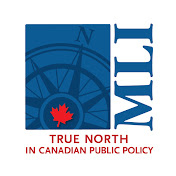Uncertainty about both the rapidly changing U.S. trade policy and the impact it’s having on the Canadian economy dominated discussion by the Bank of Canada governing council in the lead-up to its interest rate hold earlier this month.
The group also identified some key metrics for assessing the effect of tariffs on inflation as it makes monetary policy decisions, according to a summary of deliberations released on Wednesday about its April 16 decision.
The decision to keep the benchmark rate at 2.75 per cent came on the heels of U.S. President Donald Trump’s April 3 so-called “reciprocal” tariffs, which targeted a slew of countries and roiled markets.
Those were the latest in multiple rounds of tariffs, three of which — on non-CUSMA compliant goods, on steel and aluminum, and on the auto sector — have hit Canada since early March, spurring $60 billion in retaliatory counter-tariffs.
Story continues below advertisement
The governing council, headed by Bank of …





![How U.S. tariff uncertainty weighed on Bank of Canadas latest rate move – National [Video]](https://canadanewsvideo.com/wp-content/uploads/2025/05/mp_759549_0_efbda8817089d9eb1fe7096333f1092d3c4b63804437367867ae31e07403bfe4jpg.jpg)




![Guns, drugs seized, 5 arrested in joint Manitoba police investigation - Winnipeg [Video]](https://canadanewsvideo.com/wp-content/uploads/2025/06/mp_777477_0_Image20250612T111254548jpg.jpg)
![YouTube [Video]](https://canadanewsvideo.com/wp-content/uploads/2025/06/mp_777495_0_0jpg.jpg)
![Man charged with abduction of son arrested after landing in Mississauga [Video]](https://canadanewsvideo.com/wp-content/uploads/2025/06/mp_777480_0_thunderstormsairportpearsonjpg.jpg)
![OB/GYN patient complaints up 29% over previous year: Ontarios patient ombudsman [Video]](https://canadanewsvideo.com/wp-content/uploads/2025/06/mp_777474_0_df4951634867b5088ef33404d8f7ff6bfa12c47888ec15f2dc99e76dd22490bdjpg.jpg)
